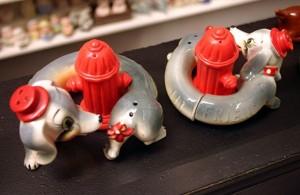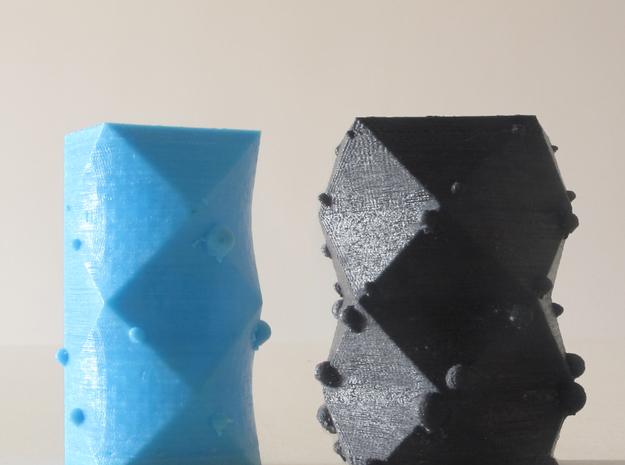If you haven’t ever looked at collectible salt and pepper shakers, you should take a moment of your time to peruse the dramatic variety. You might not have realized that salt and pepper shakers had such a diversity of forms or such a loyal fan base. Some collect them because they are cute while for others it is a serious hobby involving surprisingly large sums of money. One such collection was created over the course of a couple of decades by Andrea Ludden, a Belgian archeologist now living in the United States.
It began when she bought a pepper grinder at a yard sale but then found it didn’t work. She put it in a window ledge and bought another. Then, she found one that promised to be even better and so she added the second grinder to her window shelf. Slowly, but surely, she began to notice salt and pepper shakers in more and more places and in a delightful variety of forms. Over the next several decades, her collection grew to include 80,000 shakers. This collection now resides at their Museum of Salt and Pepper Shakers in Gatlinburg, Tennessee.
The collection ranges from beautifully wrought works in silver to kitschy hugging kittens and everywhere in between. Ludden notes that there are even a whole series of sexually explicit salt shakers, but quickly qualifies that because of the family oriented nature of her museum, they don’t put those on display.
Salt shakers came into existence in the 1920s; prior to this time, salt had been served in a small container with a lid called a salt cellar. The Morton Salt Company discovered that by adding magnesium carbonate to the salt it would prevent caking and could be shaken out of a container through small holes. In fact, there’s a entire history to salt that is well worth exploring and is  covered in great, and entertaining, detail in a book called, appropriately, Salt by Mark Kurlansky.
covered in great, and entertaining, detail in a book called, appropriately, Salt by Mark Kurlansky.
There’s a new type of salt and pepper shaker that Ms. Ludden might want to consider adding to her already vast collection and it is as cutting edge now as non-caking salt was in the 1920s: 3D printed salt and pepper shakers. A particularly interesting set has been designed by Pseudorama, a design studio based in Colombia and are created using an algorithm that integrates the personal stories of couples into their form.
As each form is created based on personal data from a couple, each set of salt and pepper shakers is different, creating a mind boggling design, and then 3D printed via Shapeways. In order to have your own personalized set representing you and your partner, some information that the designers at Pseudorama need from you are things such as height, weight, hair, and eye color. Once the information is entered into the program, a form is generated unique to that particular couple. That form can be printed through Shapeways in any of their plastics.
I guess this could also be a way of turning a life that is unlucky in love into a burgeoning collection of salt and pepper shakers; each one a tragic memory. However, it’s probably better to hope for just one set – and that it’s perfect.
Let’s hear your thoughts on these designs. Have you purchased them? Discuss in the 3D Printed Salt & Pepper Shaker forum thread on 3DPB.com.
Subscribe to Our Email Newsletter
Stay up-to-date on all the latest news from the 3D printing industry and receive information and offers from third party vendors.
You May Also Like
Precision at the Microscale: UK Researchers Advance Medical Devices with BMF’s 3D Printing Tech
University of Nottingham researchers are using Boston Micro Fabrication‘s (BMF) 3D printing technology to develop medical devices that improve compatibility with human tissue. Funded by a UK grant, this project...
3D Printing Webinar and Event Roundup: April 21, 2024
It’s another busy week of webinars and events, starting with Hannover Messe in Germany and continuing with Metalcasting Congress, Chinaplas, TechBlick’s Innovation Festival, and more. Stratasys continues its advanced training...
3D Printing Webinar and Event Roundup: March 17, 2024
It’s another busy week of webinars and events, including SALMED 2024 and AM Forum in Berlin. Stratasys continues its in-person training and is offering two webinars, ASTM is holding a...
3D Printed Micro Antenna is 15% Smaller and 6X Lighter
Horizon Microtechnologies has achieved success in creating a high-frequency D-Band horn antenna through micro 3D printing. However, this achievement did not rely solely on 3D printing; it involved a combination...






























